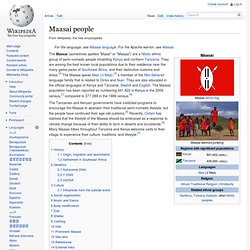

Herman Damar Captures Breath Taking Pictures Of Every Day Life Villagers In Indonesia. The beautiful images you see below are the work of a self taught photographer named Herman Damar . he lives in indonesia and has been capturing the most awesome moments from the every day life of villagers that live out site of Jakarta .the nation’s capital.

The most beautiful thing about his photos is that he usually focus on young happy children when they are playing , this shows you the wonder and natural beauty of the villagers living in Indonesia . One cool fact you need to know about Herman Damar is that he used to be an advertising director before starting his photographer career ” Indonesian people are very diverse and humble. they are very happy when i take a shot of them “ ” The best part about this is that i can be in contact with the villagers , their happiness and their lives “ ” These images were taken in villages outskirts of Jakarta , they are unspoiled by technological advance “ Source: Imgur Comments Your Comments. 95.7 KJR.
The Wind. Cliff diving portugal photo. Random photo Submit your photo Stumble Thru action photography, landscape photography Tags: adrenaline cliff dive portugal cliff diving, portugal by dean treml 41 888 views Rating: +3 green volcanic mountains, azores, portugal chilling above the smog in shanghai, china hanging from a moscow skyscraper These People Are Not Afraid of Heights Place your ad here Loading...

About OneBigPhoto is your daily dose of high quality photos. 2686 photos uploaded Important stuff Top rated Top galleries Submit photo Privacy policy Wallpaper Contact us Connect with us Search Some rights reserved. ©2013 OneBigPhoto.com. Human Planet Explorer - Fishing (pictures, video, facts & news) Young teenage Arbore girl. Karo tribe - Images. The Himba: Namibia's iconic red women. The Himba women of northern Namibia are famous for their use of otjize, a paste of butter, fat and red ochre, which they apply to their hair and skin.
Otjize sometimes contains aromatic resin from a local shrub to provide an appealing fragrance. It is applied by Himba women every morning, but never by men. Some have speculated the otjize is applied for sun protection or to ward off insects, but the Himba say it is for aesthetic reasons. Himba children stay with their mother until the age of three, when they live with their siblings and are cared for by all members of the village.
Hikuminue Kapika, chief of the Himba village of Omarumba on northern Namibia. Himba homes are round structures constructed of sapling posts, which bound together to form a conical roof plastered in mud and dung. Every morning, Himba women wake at or before dawn, apply their otjize, then milk the livestock. Once the milking is done, the young men of the village herd the animals out to graze. Maasai people. The Maasai (sometimes spelled "Masai" or "Masaai") are a Nilotic ethnic group of semi-nomadic people inhabiting Kenya and northern Tanzania.

They are among the best known local populations due to their residence near the many game parks of Southeast Africa, and their distinctive customs and dress.[3] The Maasai speak Maa (ɔl Maa),[3] a member of the Nilo-Saharan language family that is related to Dinka and Nuer. They are also educated in the official languages of Kenya and Tanzania, Swahili and English. The Maasai population has been reported as numbering 841,622 in Kenya in the 2009 census,[1] compared to 377,089 in the 1989 census.[4] History[edit] The Maasai are a Nilotic group. Origin, migration and assimilation[edit] Maasai man Settlement in Southeast Africa[edit] Because of this migration, the Maasai are the southernmost Nilotic speakers.
Maasai are pastoralist and have resisted the urging of the Tanzanian and Kenyan governments to adopt a more sedentary lifestyle. Genetics[edit]